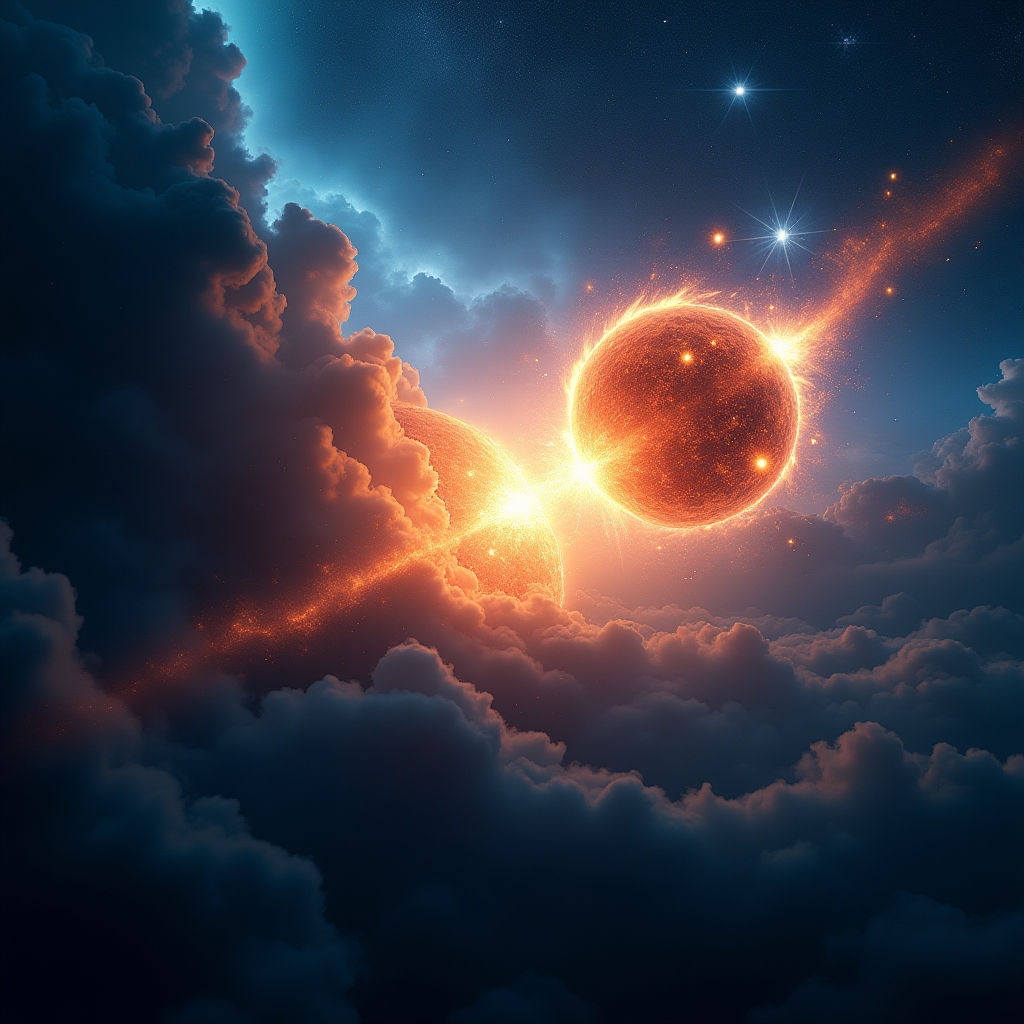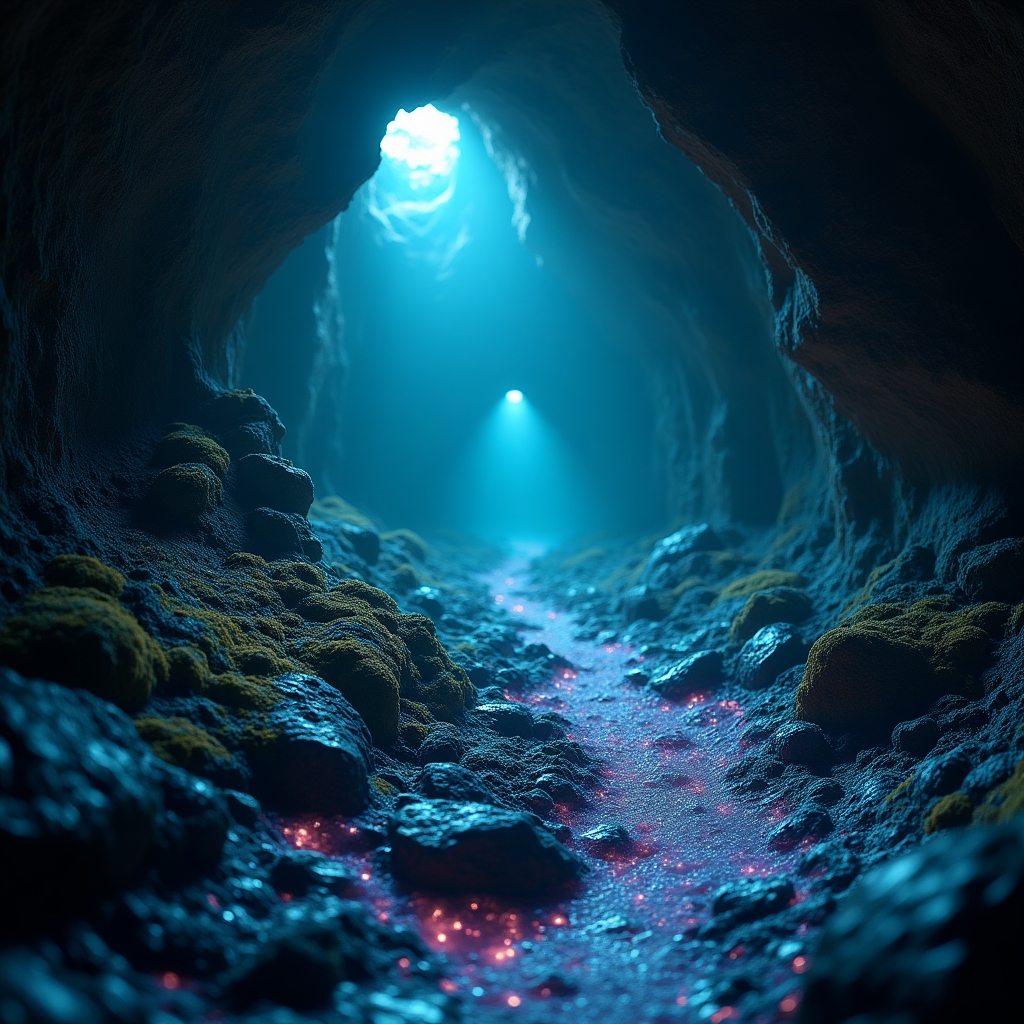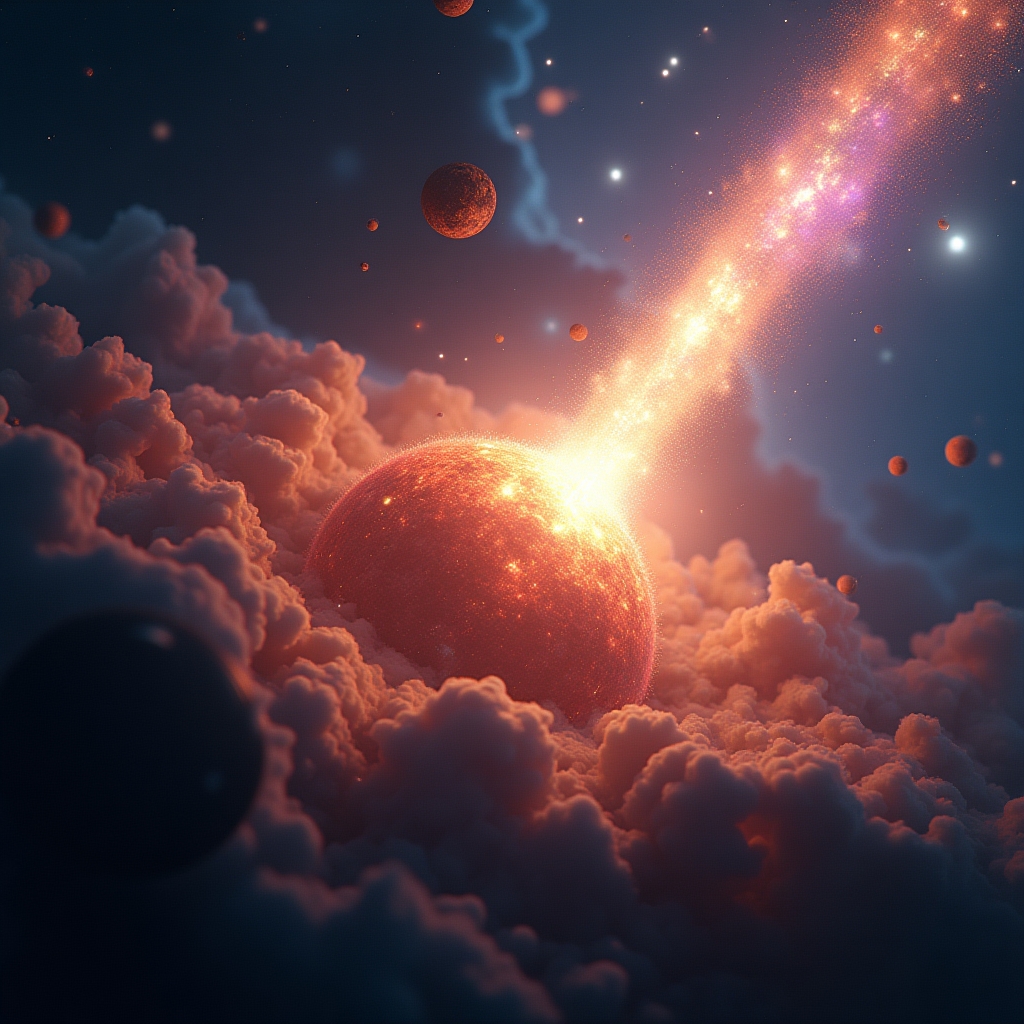The universe is a story of beginnings, transformations, and cosmic collisions that span across billions of years. Recently, the legendary Hubble Space Telescope has unveiled a mesmerizing chapter: a celestial drama where two stars collided, resulting in a white dwarf. This new discovery sheds light on a rare cosmic event that was, until now, shrouded in mystery.
iN SUMMARY
- 🌌 **Hubble** uncovers a rare white dwarf formed by a stellar collision.
- 🔬 Discovery reveals **carbon traces** in the atmosphere hinting at its violent past.
- 📡 This phenomenon was previously **invisible** in ordinary optical light.
- 🚀 Opens new avenues for understanding **cosmic mergers** and star life cycles.
The Unveiling: A Rare Cosmic Collision
According to Science Daily, the white dwarf uncovered by Hubble is likely the result of an astronomical collision between two stars. This violent phenomenon, akin to a cosmic dance, resulted in the fusion of two stellar bodies into one. Such collisions are rare and complex events that were previously thought to be nearly invisible when viewed in ordinary optical light.
What is a White Dwarf?
In the vastness of space, stars live out lifecycles that span billions of years. A white dwarf is what remains after a star has exhausted its nuclear fuel and shed its outer layers. However, the newly discovered white dwarf stands out for its peculiar atmospheric composition, notably the presence of carbon—a clue pointing to the star's turbulent origins as a stellar collision.
The Role of Hubble in the Discovery
The Hubble Space Telescope, a project of international cooperation between NASA and ESA, has been pivotal in unlocking astonishing celestial mysteries. It was only through Hubble's keen "eyes" that astronomers could spot the faint carbon signals associated with the white dwarf, providing insights into its violent past.
Carbon Traces: Clues to a Violent Past
Carbon is a silent storyteller in the universe's narrative, a remnant that astronomers associate with tumultuous stellar events. The detection of carbon in the white dwarf’s atmosphere was like finding a cosmic breadcrumb trail leading scientists back to the scene of a cataclysmic merger. This evidence builds a picture of how two massive stellar entities could end in such an explosive cosmic event.
Why It Matters
This discovery is not merely a fascinating astronomical tidbit; it opens new doors in our understanding of stellar life cycles and cosmic interactions. Knowing that such collisions can lead to detectable remnants encourages further exploration and advances our comprehension of the intricate ballet of stars that populate our universe.
The Broader Implications of Stellar Collisions
- Understanding Star Life Cycles: Stars are the universe’s fundamental building blocks. Their life cycles give birth to the elements that make up everything—from the water we drink to the ground we walk on.
- Learning from Cosmic Mergers: Mergers can form new stellar objects and offer insights into gravitational waves, which are ripples in space-time caused by massive cosmic events.
- Technology and Cooperation: This discovery underscores the importance of global scientific collaboration and advanced technology in exploring cosmic phenomena.
Seeing the Universe with New Eyes
As we peer more deeply into the universe, we unravel stories written in the stars. Capturing rare events like stellar collisions not only enriches our cosmic catalog but also fuels our curiosity about what else lies beyond. To stay updated with more space revelations, visit the local news portals for timely updates from your area, like New York, Toronto, or even Sydney.
Looking Forward: What Can We Discover Together?
What other cosmic dances will Hubble reveal next? What role will future telescopes play in unveiling the cosmic secrets still hidden from view? The depths of space are vast and beckoning with more stories yet to unfold.
Join the conversation! What do you think this discovery means for our understanding of the universe? We invite you to become part of iNthacity community, discuss, share, and engage with fellow space enthusiasts. The cosmos is a vast canvas, and there’s so much more for us to explore together.
As you gaze up at the stars tonight, think of them not just as distant points of light, but as sites of beginnings, endings, and wonders beyond imagination. Because in the grand ballet of the universe, there's a dance for everyone—even if it's billions of light-years away!
Disclaimer: This article may contain affiliate links. If you click on these links and make a purchase, we may receive a commission at no additional cost to you. Our recommendations and reviews are always independent and objective, aiming to provide you with the best information and resources.
Get Exclusive Stories, Photos, Art & Offers - Subscribe Today!
























Post Comment
You must be logged in to post a comment.